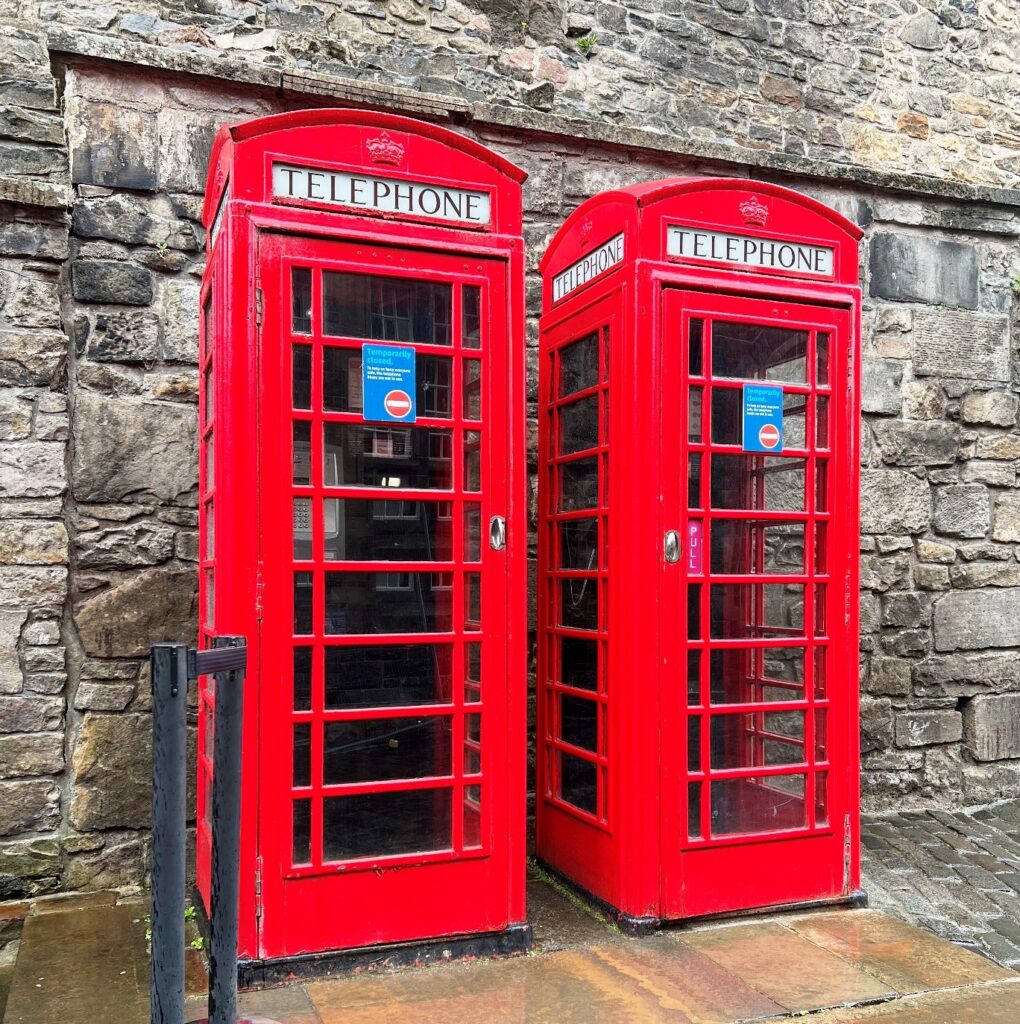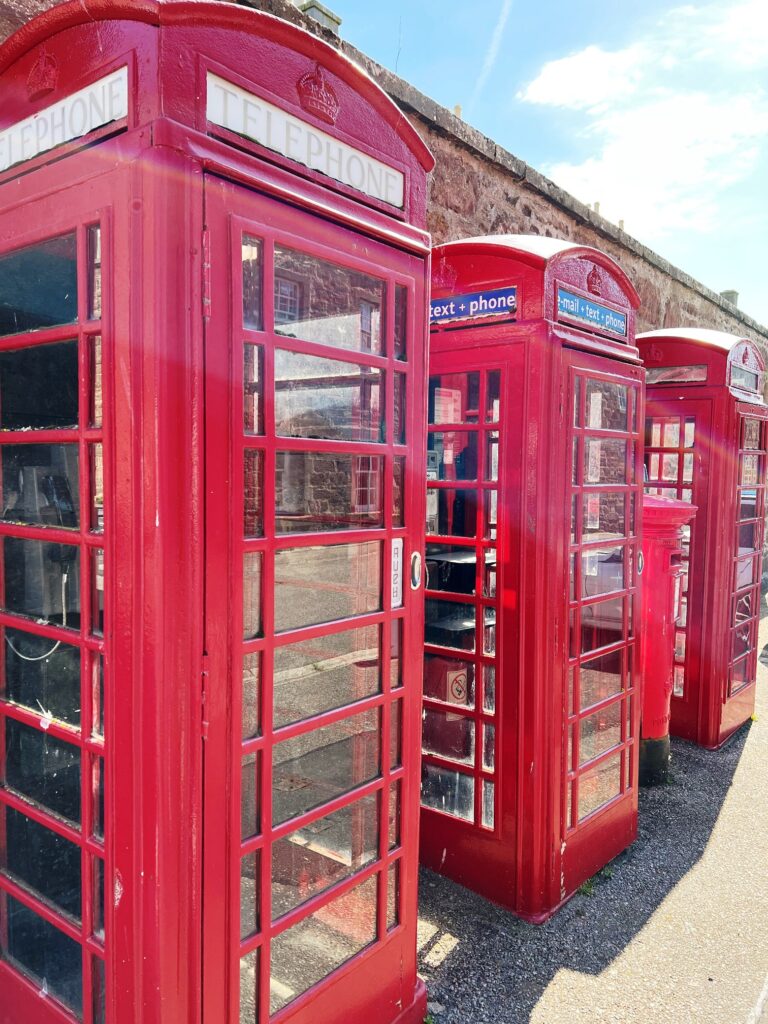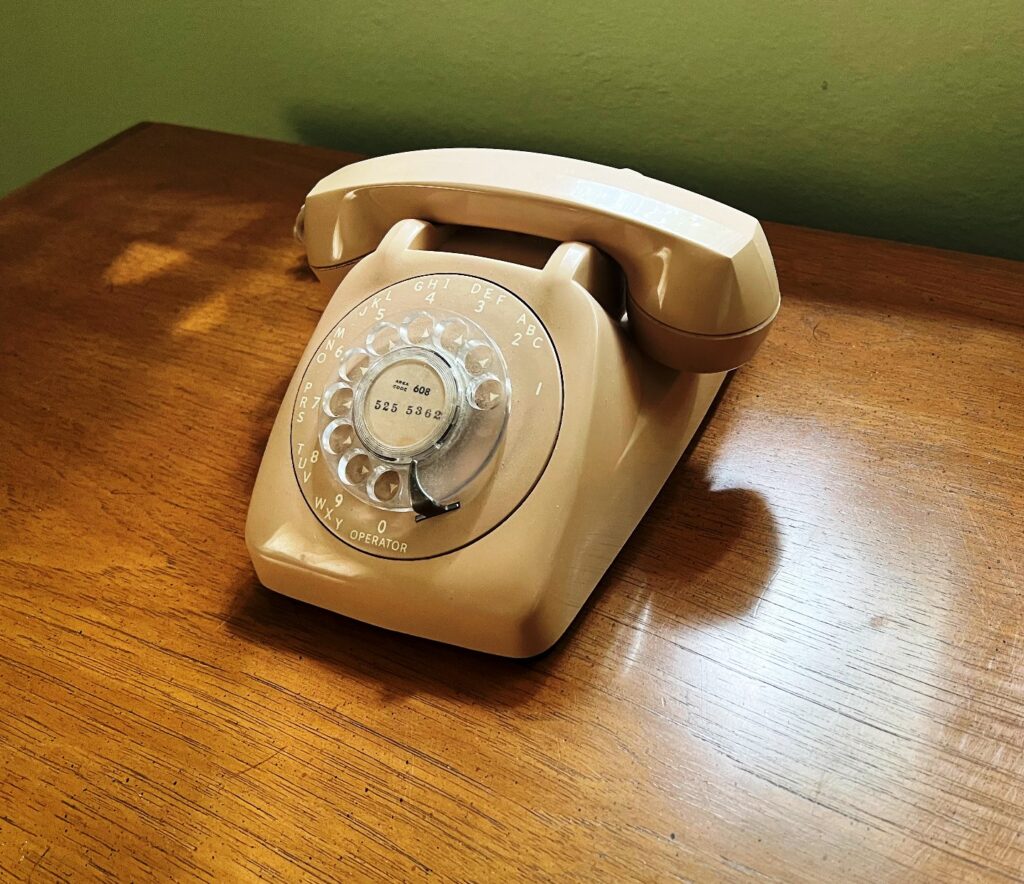Back Home by Chris Hardie
- Download this column as a Word document
- Download the photos that accompany this story
- Chris Hardie’s headshot

The world of communication is now in our pocket thanks to the marvels of technology. Our powerful smartphones have so many bells, whistles, gadgets and apps that the actual concept of being a telephone seems like an afterthought.
My parents moved to our farm in 1970 and our telephone service was a four-party line. That meant that four households in our neighborhood shared the same phone line.
News sometimes traveled fast if there were nosey neighbors who liked to eavesdrop on the conversations. In the event of an emergency, you had to break in and ask them to hang up so you could make the call.
The phone in the barn – a 1950s model constructed of heavy black bakelite with a metal dial that was designed to handle the outdoor environment – shared the same number as the house. If you wanted to call the barn from the house or vice versa, you had to dial the number, hang up and wait for the phone to ring.
Private phone lines — an unheard of luxury — weren’t available and touch-tone phones were still years into the future. We were part of the Ettrick exchange and the next valley over was Melrose. But that was a long distance call, as was phoning Taylor, the location of our postal service.
Long distance calls meant spending money, so they were to be minimal. How unfortunate for my parents that my girlfriend (now wife) Sherry lived in Mindoro, a long distance call. I spent many hours lying on the floor with the phone cord stretched as far as it would go whispering sweet nothings that were actually pricey somethings. Eventually the folks signed up for a long distance nights and weekends plan which cost less.

When we needed a ride home after an athletic event, we would call collect with the assistance of an operator. If you really wanted to save money, you could refuse the charges, knowing that your son or daughter was sending you the equivalent of today’s text message asking for a ride.
The disappearance of land lines has led to the demise of pay phones and phone booths and the younger generation not having a clue about what “Got a dime … call someone who cares” even means.
Even the ubiquitous red telephone booths synonymous with Great Britain are disappearing from the landscape – although not as fast as phone booths here.
A story from National Public Radio from last November said United Kingdom phone regulator Ofcom is keeping thousands of the red phone kiosks in service – particularly in areas where payphones are still vital in case of emergencies and where cellphone users can’t get a reliable signal.
A call box can stay in service if it is used at least 52 times over a year or if located in an area identified as an accident or a suicide hotspot.

During our recent trip to Scotland we noticed there are still quite a few red call boxes still standing, even though half have been removed. There are still about 21,000 left in the U.K. and some have been converted to other uses – like community libraries or to house defibrillators. Ofcom says a decommissioned box can be adopted by a local community for just 1 pound, which has happened with about 6,000 kiosks.
Back at the farm we still have a landline, as cell phone service in our part of Wisconsin is a little sketchy but improving. But sometimes I miss the old phone that used to hang in the barn.
Chris Hardie spent more than 30 years as a reporter, editor



